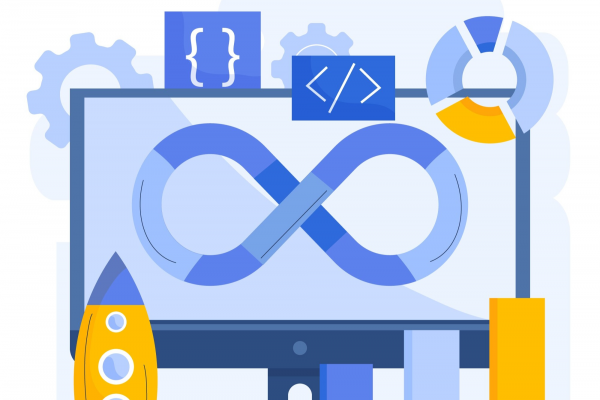It is not uncommon to associate good quality products with higher costs and poor quality items with lower costs. But companies will pay a high price for poor quality products as they may damage the brand’s reputation, apart from the money the company will spend repairing or replacing the items that didn’t work.
The cost vs. quality of a product is a function of the effort and time that go into manufacturing and analyzing each component of the product and the entire product. Hence, companies must adopt value engineering, a technique to find the balance between product quality and cost.
It is a process that involves a detailed review of products during the design phase and carefully substituting alternatives wherever possible without compromising the quality and functionality of the product.
Steps to Balance Cost and Quality in Product Engineering
- Understand the core product and its objectives
For any product to succeed in the competitive marketplace, companies must first identify the key objectives of their products, whether it is a commonly used product or a game-changing innovative product that sets a benchmark for the specific product category.
Every stakeholder involved in the project, from product ideation to its delivery, must be completely aligned on its goals and reasons for developing it. Understanding the core product objectives is crucial for businesses producing high-tech electronic products, telematics equipment, and connectivity devices that require stringent design processes. Value engineering can help prevent unexpected rises in production costs as it can rightly balance the product’s value with its innovative aspect.
- Stay on schedule
Project schedules include intermediate timelines and product delivery times. To manage project timelines, first, the requirements need to be organized from the topmost to the most granular level and communicated to the teams. Development teams will collect the requirements from this information and continue development using a specific methodology.
A main detriment to keeping up with the project schedule is the lack of visibility among the team members, which makes them focus on the wrong tasks. To avoid this, requirements tracking must be a part of every step of product engineering. Teams must track their work at every stage after identifying what needs to be tracked to ensure progress and minimize issues.
Once you gain visibility into the data to be tracked, that must be captured to ascertain the progress and identify the roadblocks. You must also track the testing status, which is a key factor for quality assessment.
- Avoid re-working
From a project management viewpoint, budget is the key metric that determines the cost. Re-work is one of the most expensive occurrences in product engineering. Re-work happens when teams go through development activities only to find out in the end that they did not create what they intended to or that user expectations were not met.
To avoid or reduce re-work, teams must clearly define scope, agree, and then begin development. As and when new requirements are generated, verification must be done at each level. Another way for teams to avoid unnecessary costs and delayed schedules is to reduce the waiting time to begin any activity. This is possible by having clear visibility across the product development lifecycle and access to all information.
- Make robust, adaptable designs
Product designs must be flexible, robust, and adaptable to manufacturing variations. All parts must be designed with variations and sensitivities in mind. The team must get insights into how variation in the individual design characteristics of product parts can influence the entire product design. This insight enables designers and engineers to make more robust design decisions early in product engineering, which can prevent expensive re-work in the later stages.
- Perform quick iterations
During the design or development phase, designers and engineers make decisions on how to create design features to achieve the desired product quality, but feedback is not obtained until the prototyping phase. The challenge is to obtain feedback early in the design process so that more design alternatives can be considered. Quick iterations must be performed with dimensional control for the preferred quality.
- Take cost-effective decisions
Variation is an unavoidable reality of the production process. While most companies understand this, they deal with it differently. Some perform multiple testing and prototype cycles to understand this change better, while others perform immediate inspection and take real-time corrective action. Others perform tolerance analysis to predict changes upfront. Each of these approaches incurs significant costs and requires certain tools to perform. Companies must understand their specific requirements to choose the most appropriate and cost-effective methodology for their product to get ahead of variation issues rather than correcting them later on.
- Determine action for “out-of-spec” components
It is not uncommon for companies to receive a batch of expensive parts that are outside tolerance limits even after a product is in production. The cost of repairing or scrapping these parts could cost businesses millions of dollars. At this stage, engineers must determine whether to accept these out-of-spec parts or take corrective action. Actual data from these parts can be extracted to identify the impact and choose the most cost-effective remedial action.
- Provide sustained training
Consistent knowledge sharing must take place between all stakeholders involved in product engineering. Lack of knowledge can lead to costly mistakes being made and time being lost. The training courses must focus on the subject matter and practical application of the product. Context-specific guidance must be offered throughout the development process, as it is expensive and time-consuming for businesses to figure out which process or part is causing an issue.
- Maintain consistent data throughout the engineering process
The most important step in successful product engineering is to maintain accurate and consistent data throughout the product lifecycle. Standardized information and reporting formats enhance communication between teams involved, allowing them to get benefits at each stage across departments. This constant data flow can significantly reduce errors and ignorance, leading to expensive corrections and poor-quality products.
Conclusion
To balance the cost and quality elements of product engineering, important decisions and correct trade-offs must be made during the product development lifecycle. The key to successful product engineering is informed decision-making, justification of these decisions, and understanding their impacts. Properly managing project requirements drives these decisions at every stage of product development, where teams can better track requirements, manage gaps, and ensure visibility and communication. Avail STL Digital’s project engineering services to create innovative products and drive engineering through agile methodologies and quality-driven processes backed by a digital ecosystem.
FAQs
- How does pricing impact each stage of the product lifecycle?
Price elasticity varies at each product development stage. With competition in mind, making a given brand a prime focus for consumers is challenging. As the product progresses to the next stage, competition increases and consumers become more price-sensitive.
- What are the financial outcomes of the product lifecycle?
Monetarily, the growth phase of the product lifecycle indicates higher revenue and increased sales. When competitors begin to offer similar products, companies are forced to reduce margins and bring down product prices. The growth and decline experienced by a product occur between its introduction to consumers and its discontinuation.
- How can businesses extend a product’s lifecycle?
Companies must consider implementing advanced features as products start becoming obsolete in the face of competition and market saturation. They must review product packaging and marketing strategies. Businesses must explore other markets aside from their niche customer base.
- What are the steps to improving a product’s quality?
- Track KPIs (Key Performance Indicators)
- Manage demand and supply effectively
- Identify customer needs
- Enhance internal communication
- Focus more on employee training
- Offer a comprehensive post-sale service
- Hold team-meeting regularly at every development stage.



